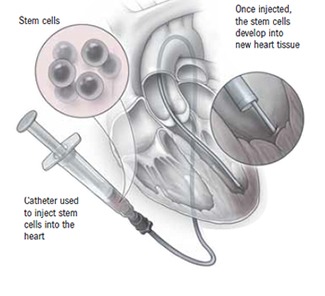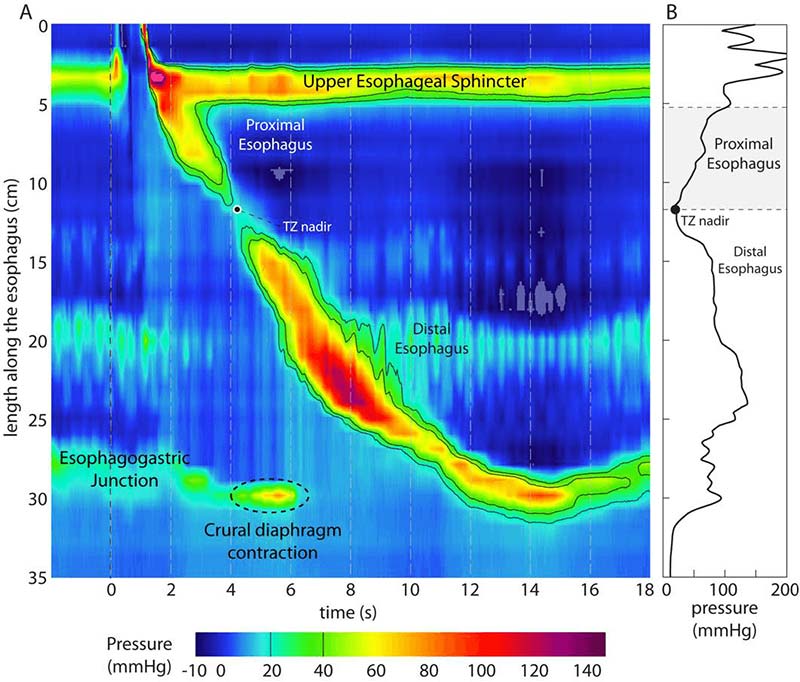3 Thrilling Talks from Dysphagia Research Society
Post-Graduate Course:
Integrating the Art and Science of Swallowing with Technology
Wednesday, March 11, 2015, Chicago, IL
by Karen Sheffler, MS, CCC-SLP, BCS-S of SwallowStudy.com
The Wednesday, March 11th Post-Graduate Course seems so long ago, especially after completing 3 additional full days at the Dysphagia Research Society 23rd Annual Meeting. I dug through my notes and did my homework to put together this blog. I hope to share a few highlights from this mind-blowing first day where all the sessions were worthy of separate blog posts.
See Dysphagia Research Society 23rd Annual Meeting & Post-Graduate Course Brochure/Program pdf here.

My wheels were turning fast to keep up!
Dr Kulwinder Dua, 2014-2015 DRS President introduced the day asking: “If technology fails, will you be lost?” He stressed that we still need the art of good history taking and a keen sense of observation.
And, is there ever a blossoming of technology! To use a quote from Dr Rosemary Martino’s State of the Art Talk: “The best way to predict the future is to invent it,” by Alan Kay.
 Warning: much of this research is really at the Proof of Concept stage, meaning NOT ready yet for broad clinical use. However, learning about it now will help – cause it is coming!
Warning: much of this research is really at the Proof of Concept stage, meaning NOT ready yet for broad clinical use. However, learning about it now will help – cause it is coming!
1. Neuroplasticity and an Alphabet Soup Feast:
TMS, MEP, rTMS, PAS, PES, tDCS, BDNF
Thank you to Shaheen Hamdy, MB ChB, FRCP, PhD, who has been presenting his work at DRS for years. Hamdy shared this early morning session on Neurology with Ruth E. Martin, PhD, MHSc, BA, Georgia Malandraki, PhD, CCC-SLP, BCS-S and Sandeep Kumar, MD, FAHA.
I am going to cover two of the talks that looked into non-invasive brain stimulation to improve dysphagia. For early work see also Hamdy et al., 1998 (references at end of section #1), who found that swallow recovery can be influenced by reorganization of the non-involved cerebral hemisphere.
I digested this alphabet soup a bit, thanks to Dr Sandeep Kumar, from Boston’s Beth Israel Deaconess Medical Center. Dr Kumar explained the acronyms during his session: Non-Invasive Brain Stimulation for Improving Swallowing After Stroke.
Kumar discussed Transcranial Magnetic Stimulation (TMS) which applies a non-invasive electrical current in the brain with electromagnetic fields (electromagnetic induction principle). Stimulation produces Motor Evoked Potentials (MEPs) in the muscles. MEP can be detected at a targeted muscle by surface electrodes/EMG, seeing a spike in amplitude of contraction. You can test pharyngeal motor evoked potentials (PMEPs), as described in Michou et al., 2012 below. Kumar further reviewed Repetitive TMS (rTMS), as high frequency rTMS causes brain excitation that outlasts the period of stimulation. The potential for neuroplasticity and dysphagia recovery has great implications for stroke, Parkinson’s and Multiple Sclerosis. Hamdy also indicated that rapid-multiple stimuli to the dominant pharyngeal hemisphere gets good cross-hemisphere effects. Research is ongoing into stimulating the pharyngeal motor cortex. Jefferson, et al., 2009 induced “experimental-virtual lesions” in the dominant pharyngeal motor cortex of healthy volunteers. Researchers then used 5Hz rTMS over the contralateral/unaffected pharyngeal motor cortex, which crossed over to improve the affected side and restored swallow function.
Does this facilitate natural neuroplasticity?
Park et al., 2012 studied high frequency rTMS in 18 patients with dysphagia at one month post-stroke. They found a significant improvement in swallow function in rTMS group vs Sham. Would they have improved anyway? We do not know, as the sham group already had Penetration-Aspiration Scale scores at 4 or less at baseline. The improvements were really seen when patients were initially more severe. Kumar also critiqued that the sample size was small and the groups were unbalanced at baseline.
More research excitement is with Paired Associative Stimulation or PAS (not to be confused with Penetration-Aspiration Scale/PAS). See the references below from Michou et al., 2012 and 2013. She and Hamdy’s team in Manchester, UK have been researching neurostimulation that pairs peripheral pharyngeal electrical stimulation (PES) with cortical stimulation. The pharyngeal catheter delivers a 0.2 millisecond pulse while the TMS delivers it’s pulse to the unaffected pharyngeal motor cortex (MI). Chronic dysphagia patients with 10 minutes of PAS had increased cortical excitation and decreased Penetration-Aspiration Scores.
So, you can say 10 minutes of PAS decreases the dysphagic patient’s PAS! Follow?
The final type of stimulation discussed was Transcranial Direct Current Stimulation (tDCS), which “sends out a constant, low direct current through electrodes in region of interest,” per Kumar to “induce intracerebral current flow.” Anodal (increasing neuronal excitability) tDCS has been used in combination with therapy (Kumar recommended: Jefferson et al., 2009 – see reference below; Hummel et al., 2005; Lindenberg, et al., 2010). Kumar and the Neurology panel noted that safety/efficacy in acute strokes has not been fully tested.
See Kumar et al., 2011 for his pilot study in a small sample, researching Anodal tDCS in acute stroke and dysphagia recovery. However, this study used the Dysphagia Outcome and Severity Scale (DOSS) as it’s only outcome measure (see O’Neil et al., 1999, regarding the DOSS, below). There was improvement in the DOSS scores in the tDCS group versus the sham group. However, measuring outcomes based on diet improvements has significant limitations (i.e., clinician variability, no diet standardization, and patient preference – to name a few). Kumar also recommended Shigematsu et al., 2013, but this also had a small sample. Clearly more studies are needed.
Kumar shared plans for a NIH/NINDS supported 5-year trial to study the safety and effects of high-dose and low-dose tDCS versus Sham. This is called: Fostering Eating After Stroke using tDCS (FEASt). This will be a prospective, single-center, double-blind RCT with a sample size of 99 acute unilateral stroke patients with dysphagia (2-6 days post-stroke). We will have to wait to feast our eyes on the results.
The final alphabet soup combination is BDNF, and it is from Dr Shaheen Hamdy’s talk: Plasticity in Human Swallowing Motor Cortex – Genes, Transmitters and Remote Effects. BDNF or Brain-Derived Neurotrophic Factor are neurotrophins (proteins that are capable of signaling cells to grow, heal, differentiate, etc). These may point out which patients have increased potential for neuroplasticity. There was a poster (#23) on The Role of BDNF Polymorphisms in Predicting Response to Pharyngeal Electrical Stimulation after Dysphagic Stroke, by Essa, Hani and colleagues (including Hamdy from Manchester, UK). This work is linking the patient’s genetics with the patient’s inherent potential to heal in response to treatments. Hamdy stated: your “genetic makeup will stratify your outcome.” According to Essa’s poster some patients may have better recovery at 3 months post stroke, as their genetically predisposed to have better neuroplasticity. Again, in Hamdy’s words: genetics show us “how much juice we can get out of the system and is the brain susceptible” to intervention? He has found some patients are less responsive to cortical stimulation. He questioned if some patients may have a reduced functional connectivity. Hamdy wants to further examine patients with head and neck cancer to determine if there are genetic markers that would suggest treatment potential.
Whoosh! In a blog post, I cannot dive into this complex area more than that! Fortunately, Hamdy suggested the Jayasekeran et al., 2011 reference below.
Suggested References on Neuroplasticity Section:
Hamdy, S., Aziz, Q., Rothwell, J. C., Hobson, A., & Thompson, D. G. (1998). Sensorimotor modulation of human cortical swallowing pathways. The Journal of Physiology, 506(Pt 3), 857–866. doi:10.1111/j.1469-7793.1998.857bv.x https://www.ncbi.nlm.nih.gov/pmc/articles/PMC2230741/
Michou E, Mistry S, Jefferson S, Singh S, Rothwell J, Hamdy S. Targeting unlesioned pharyngeal motor cortex improves swallowing in healthy individuals and after dysphagic stroke. Gastroenterology. 2012;142:29-38 https://www.ncbi.nlm.nih.gov/pmc/articles/PMC4300844/
Michou, E., Mistry, S., Rothwell, J., & Hamdy, S. (2013). Priming Pharyngeal Motor Cortex by Repeated Paired Associative Stimulation: Implications for Dysphagia Neurorehabilitation. Neurorehabilitation and Neural Repair, 27(4), 355–362. doi:10.1177/1545968312469837 https://www.ncbi.nlm.nih.gov/pmc/articles/PMC4108291/
Jefferson, S., Mistry, S., Singh, S., Rothwell, J., & Hamdy, S. (2009). Characterizing the application of transcranial direct current stimulation in human pharyngeal motor cortex. American Journal of Physiology – Gastrointestinal and Liver Physiology, 297(6), G1035–G1040. doi:10.1152/ajpgi.00294.2009 https://www.ncbi.nlm.nih.gov/pmc/articles/PMC2850087/
Kumar, S., Wagner, C. W., Frayne, C., Zhu, L., Selim, M., Wuwei, F., & Schlaug, G. (2011). Non-invasive brain stimulation may improve stroke related dysphagia: a pilot study. Stroke; a Journal of Cerebral Circulation, 42(4), 1035–1040. doi:10.1161/STROKEAHA.110.602128 https://www.ncbi.nlm.nih.gov/pmc/articles/PMC3116809/
Jayasekeran V, Pendleton N, Holland G, et al. Val66Met in brain-derived neurotrophic factor affects stimulus-induced plasticity in the human pharyngeal motor cortex. Gastroenterology. 2011;141:827-836. https://www.ncbi.nlm.nih.gov/pubmed/21699787
O’Neil KH, Purdy M, Falk J, Gallo L. The Dysphagia Outcome and Severity Scale. Dysphagia.1999;14:139–145. https://www.ncbi.nlm.nih.gov/pubmed/10341109
2. Muscle Stem Cells and Hope for People with Dysphagia
(Peter Belafsky, MD, MPH, PhD, UC Davis; www.UCDvoice.org)
Dr Belafsky gave a talk on The Use of Regenerative Medicine for Tongue Rehabilitation. He shared with us that he is getting tired of eulogizing his head and neck cancer patients, especially those with profound dysphagia, who are literally “choking on spit all day.” He noted radiation, especially for base of tongue cancers, causes so much atrophy at the tongue base. Therefore, the distance that the tongue base and posterior pharyngeal wall have to travel is too significant, causing very poor bolus propulsion to initiate the pharyngeal stripping wave.
Belafsky urged us to think outside-the-box, as clearly what we are doing now is not working. His outside-the-box work is with muscle stem cells. The tongue could be the perfect location for easy access and easy injections of muscle stem cells.
Belafsky referred to the work in stem cells that is being done to repair damaged heart muscle. Please see:

https://www.health.harvard.edu/heart-health/repairing-the-heart-with-stem-cells
Currently, Belafsky is performing Proof of Concept studies on animal models, such as sheep and mice. In mice with hemiglossectomies, injections of human muscle stem cells incorporated into tongue tissue in 9 weeks. Thereafter, the cells started to re-populate. He is now using the large animal model of the sheep to inject sheep stem cells into their tongue bases. He injected 500 million green-stained myoblasts (“primative muscle cell having the potential to develop into a muscle fiber,” per American Heritage Medical Dictionary, 2007, Houghton Mifflin Company). He saw the myoblasts surrounding injured muscle tissue in an attempt to repair. This process was facilitated by cells called “MSCs” (Mesenchymal Stem Cells, also called Multipotent Stromal Cells, per Wikipedia https://en.m.wikipedia.org/wiki/Mesenchymal_stem_cell). With these MSCs stained red, he noted that the MSCs were like “party planners, herding the muscle stem cells.”
His team has made “no promises that this will work in humans,” but they have “perpetual optimism, no fear of failure/hard work/sweat, and no shortage of creativity.”
Check out UC Davis Institute for Regenerative Cures: https://www.ucdmc.ucdavis.edu/stemcellresearch/
Dr Belafsky inspired us throughout DRS2015!
For further inspiration, please check out these videos from UC Davis Center for Voice & Swallowing and the National Foundation of Swallowing Disorders (NFOSD). The first video: Thoughts About Water can be found on the UC Davis website too.
https://www.youtube.com/watch?v=afROdPiGlt8&t=12
https://www.youtube.com/watch?v=16YIXApvvgc
3. High-Resolution Pharyngeal Manometry
(Dr Timothy M. McCulloch, MD, FACS)
Dr Timothy McCulloch, of University of Wisconsin-Madison’s Division of Otolaryngology/Surgery (https://www.surgery.wisc.edu/profile/timothy-mcculloch), shared how manometry is not new. McCulloch acknowledged Fred M.S. McConnel, MD and Susan Butler’s work with pharyngeal manometry using low-resolution in the past.
For example, See McConnel, et al., 1988 in Dysphagia: https://link.springer.com/article/10.1007/BF02414425.
Now High Resolution Manometry (HRM) is a solid state manometer rather than a water-profusion manometer, “so we are not going to drown our patients,” per McCullough. HRM provides us with 3-dimensional data from 36 circumferential sensors spaced at 1 cm intervals along the catheter. The circumferential manometric data is fused into a single signal at each centimeter point. With 12-14 sensor points in the pharynx (starting at the nasopharynx), that is “a lot of pressure data.”
McCullough reviewed the basics of HRM:
Pressures are represented in colors, with blue being low pressure and bright red being the highest pressure. This tracks the swallowing physiology that impacts bolus movement. Simultaneous Manometry and Modified Barium Swallow studies help us track the bolus and swallowing physiology, while we see what pressures there are on the bolus before, during and after the swallow. The first red-high-pressure zone is due to the closure of the nasopharynx. The bolus is transmitted through a very low pressure zone, as the head of the bolus moves faster than the tail of the bolus through the pharynx. As the bolus reaches the upper esophageal sphincter, you can “see the pressures essentially disappear in the upper esophageal sphincter,” per McCullough. Then the bolus is cleared with higher pressures at the tail of the bolus.
Bolus clearance data is shown as a “heat map” on a spatial-temporal plot of colors (y-axis is the full range of sensors and the x-axis is time). Bright-colored clearance forces are shown in yellow-orange-red. “You are actually watching the entire swallow at once.”
This image below is a normal swallow using High-Resolution Manometry, but it focuses primarily on the esophagus.
Unfortunately this picture is not detailed in the pharynx, as it starts at the hypopharynx in the upper left. More free images are needed in Wikimedia!
https://commons.wikimedia.org/wiki/File:HRM.jpg
The deep blue sea:
Red clearance forces tell you about muscle integrity and are eye catching. One can analyze clearance pressure durations and pressure peaks. However, McCullough noted that we can’t forget about the “blue zone.” “Data is lost in the blue sea,” per McCullough. This missing data in the bolus transport zone. It may be the “real stuff that we are worried about,” as it may tell us if the bolus is moving through esophagus, going into the trachea, or moving in a retrograde fashion. Tracking where the bolus is as it travels through the low pressure zone can be done with the addition of impedance testing. With High Resolution Impedance Manometry (HRIM) the bolus is indicated with a purple color.
The bolus is not the only thing that moves:
The catheter and the structures of the laryngopharynx and UES are moving. When you are taking UES data on relaxation times and pre and post pressures, you have to account for the fact that the UES rises significantly during the swallow. One has to keep track of where the UES is at the height of the swallow. The hyolaryngeal excursion drags the UES (which includes the CP muscle) upward/forward into the “blue sea.” It is data in this “blue zone” were the UES goes from it’s closed state to a relaxed and then open/distended state. McCulloch noted that Corrine Jones, from University of Wisconsin-Madison, is working on plotting this UES movement. A great review of the UES, along with many references, can be found in Jones, et al., (2014) with this link:
https://www.ncbi.nlm.nih.gov/pmc/articles/PMC4128397/
Jones, C. A., Hammer, M. J., Hoffman, M. R., & McCulloch, T. M. (2014). Quantifying Contributions of the Cricopharyngeus to Upper Esophageal Sphincter Pressure Changes by Means of Intramuscular Electromyography and High-Resolution Manometry. The Annals of Otology, Rhinology, and Laryngology, 123(3), 174–182. doi:10.1177/0003489414522975
Things also change as you age:
Of course, the normative data has typically been on young-healthy students willing to have catheters placed in their noses for small amounts of money! McCulloch joked that “normals” in Wisconsin may be able to swallow 12 ounces of beer in under 4 seconds. Have they tested super-swallowers?
However, the University of Wisconsin-Madison team is in the process of banking data across the life-span, including abnormal swallows and various dysfunctions. So far, they have at least 10 individuals in each decade of life. They have noted pharyngeal pressures start changing at age 50 and older.
McCulloch is encouraged that many countries around that world now collecting and sharing normative data on the pharynx and esophagus. He named Korea, countries in Europe, Australia, Japan, and China.
Future Directions:
McCulloch and team have been using MATLAB (The MathWorks Inc., Natick, MA) to help with automated data extraction, simplifying data analysis. They are extracting data from 3 points: velopharynx, hypopharynx and UES. They are teaching the computers to recognize the data patterns, creating Artificial Neural Networks (ANN, or computer machine learning). This will allow computers to predict if a swallow is normal versus abnormal. The results so far are promising, with 90% accuracy in predicting normal from abnormal. Accuracy increases to 99% when paired with additional clinical data. McCulloch is also attempting to predict MBSImP results with manometric data alone. The accuracy of ANN is 95% in predicting a “safe swallow,” 85% accurate in predicting penetration/aspiration, and 96% accurate in predicting abnormal tongue base retraction.
There is also a future need to extract 3-dimensional data from all around the pharynx and UES. As we heard from Dr Peter Belafsky since DRS in 2012, the UES is not round! It is kidney-bean shaped, and it is a huge space. McCulloch is finding that the UES manometrically is not round either. We need separate anterior, posterior and lateral data to best analyze the UES pressure patterns.
McCulloch’s referred to the work from his students:
Jacob Meyer, from UW, presented at the DRS Annual Meeting on Saturday morning: 3-Dimensional Manometry of the Upper Esophageal Sphincter during Swallowing and Non-Swallowing Tasks. This team found that anterior and posterior pressures were greater than lateral pressures at all portions of the UES. They want to find and quantify asymmetries in the UES to help guide treatment of UES dysfunction.
For HRM pictures of normal and disordered pharyngeal swallows, as well as a discussion of the 3-dimensional analysis using ANN, please see Geng, et al., (2013): https://www.ncbi.nlm.nih.gov/pmc/articles/PMC3774539/
Geng, Z., Hoffman, M. R., Jones, C. A., McCulloch, T. M., & Jiang, J. J. (2013). Three-dimensional analysis of pharyngeal high-resolution manometry data. The Laryngoscope, 123 (7), 1746–1753. doi:10.1002/lary.23987
Corinne Jones, from UW, also presented Saturday morning: Pharyngeal Pressure Gradient Phenotypes in Patients with Cricopharyngeal Prominence. Swallowing is the coordinated effort from the pump and the opening of the upper esophagus. Normal swallows should have minimal pressures across the UES (UES nadir) at the time of maximum tongue base pressure (mTBP). However, they noted that patients with cricopharyngeal prominence maintained higher residual pressures across the UES at the same time of maximum tongue base retraction. This discoordinated swallow will show an obstruction. They further classified patients into 3 groups (phenotypes): 1) patients with normal pharyngeal pressures, 2) patients with low pharyngeal pressures, and 3) patients with high pharyngeal pressures. HRM can help in the future to determine which patients will make good candidates for cricopharyngeal myotomy. Patients with low pharyngeal pressures to begin with may not benefit from a myotomy.
There was a lot of talk at this meeting about fixing the opening without fixing the pump.
Dr Dua opened the day on Wednesday talking about our plumbing! In Dr Dua’s words:
“What is the point of opening up the esophagus if the pump is still not working?”
Can I start HRM in my clinic now?
Well, the clinical world is not quite ready for pharyngeal manometry yet. High-Resolution Pharyngeal Manometry is being performed on patients at the UW Health’s Voice and Swallow Clinic, but it is in its infancy, per McCulloch. The center is contributing to UW’s growing database on abnormal swallows. McCulloch notes that they have had at least 160 patients give permission for their data to be included.
HRM is farther along when it comes to the esophagus.
“We are going to get there with the pharynx,” per McCulloch.
Here is what we need:
-
Established-automated clinical tools for data analysis.
-
Agreed-upon nomenclature and protocols.
-
Large normative data sets of normal and abnormal swallows that cover the life span, particularly including people over 50. These will help clinicians make good decisions.
-
Advancements in catheter durability and reductions in cost (per Dr Benson T. Massey, MD, FACP, who gave the session on High-Resolution Manometry: Esophageal).
-
Future HRM practitioners will need to dedicate of a lot of time to review the breadth of past research.
-
Training, Training, Training! McCulloch and Massey agreed that at least 100+ studies would be needed during a training period. Massey noted that the learning curve flattens out after about 150-300 performed studies!
Where can I get more training and information?
Suggested references:
When you open the links above in Pub Med Central, check out the reference lists within those papers, as well as the other related articles brought up by Pub Med Central.
McCulloch recommended:
-
Knigge, M.A, Thibeault, S. & McCulloch, T.M. (2014). Implementation of High-Resolution Manometry in the clinical practice of Speech-Language Pathology. Dysphagia, 29 (1), 2-16. https://link.springer.com/article/10.1007/s00455-013-9494-5
-
Mielens, J.D., Hoffman, M.R., Ciucci, M.R., Jiang, J.J. & McCulloch, T.M. (2011). Automated analysis of pharyngeal pressure data obtained with High-Resolution Manometry. Dysphagia, 26 (1), 3-12. https://link.springer.com/article/10.1007/s00455-010-9320-2
NOTE: if these Springer links do not work, you can access Dysphagia journal through your membership: www.dysphagiaresearch.org
-
Molly Knigge, MS, CCC-SLP, BCS-S, from the University of Wisconsin-Madison, will be holding a summer school on HRM. In the meantime, Knigge will also be presenting a Webinar hosted by The National Foundation of Swallowing Disorders (NFOSD) called: When Images Aren’t Enough: High-Resolution Manometry in Complex Dysphagia (4/7/15) https://swallowingdisorderfoundation.com/new-webinar-when-images-arent-enough-high-resolution-manometry-in-complex-dysphagia-4715/
- See also Dr Ciucci’s lab at the University of Wisconsin-Madison, under the Additional Research Interests section: https://www.surgery.wisc.edu/research/researchers-labs/ciucci/
Well, we made it through these thrilling topics. That was just from 3 sessions. Imagine how wonderful the 4 full days were of Dysphagia Research Society’s 23rd Annual Meeting and Post-Graduate Course! See you next year at the Dysphagia Research Society’s 2016 Annual Meeting and Post-Graduate Course: February 24-27, 2016. Location: The Westin La Paloma Resort & Spa, Tucson, Arizona!
Thank you for reading. Please comment, discuss, and give any suggestions on corrections.

